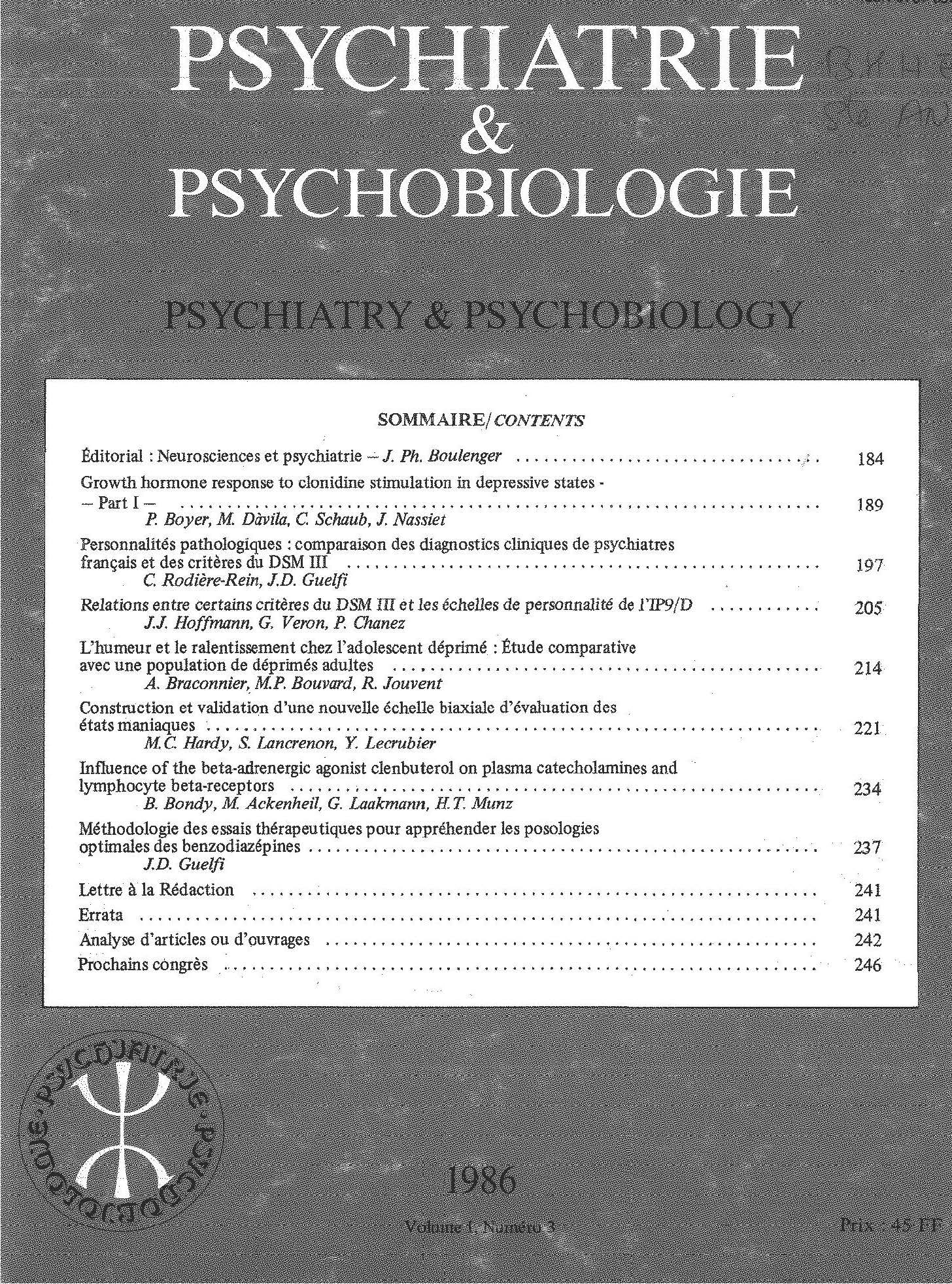Article contents
Anxiety-related inhibition
Published online by Cambridge University Press: 28 April 2020
Summary
According to pharmacological and neurophysiological data, inhibition of activity can be considered to be a characteristic feature of anxiety. There is a general inhibition regarding plans of action in carrying out daily routine, as distinct from the particular phobic avoidance inhibition.
To study this inhibition, an evaluation scale has been developed (appendix). Applied to 156 anxious patients in this multicentric study, it shows good sensitivy in terms of bromazepam's therapeutic action. The intensity of inhibition is as high in non-phobic anxious patients as in phobic anxious patients.
A measure of the efficacy of an anxiety-relieving drug on inhibition could constitute a useful complement to assessments generally based on subjective experience and physical symptoms.
Résumé
L’inhibition de l’activité peut être considérée, à la suite des travaux pharmacologiques et neurophysiologiques, comme un trait caractéristique de l'anxiété. Il s’agit d’une inhibition générale de l’activation des plans d’action habituels, distincte de l'inhibition particulière de l’évitement phobique.
Pour étudier cette inhibition, une échelle d’évaluation (WP2) a été construite: elle se présente comme un ensemble de 10 items explorant tous les domaines de l’activité, aussi bien physique qu’intellectuelle, individuelle ou sociale (cf. annexe).
Dans cette étude multicentrique, cette échelle a été appliquée à 156 patients anxieux non déprimés. On a pu mesurer la corrélation entre anxiété subjective mesurée par l’échelle d’anxiété de Hamilton et inhibition mesurée par l’échelle WP2 d’inhibition avant et après traitement anxiolytique. Elle a montré une bonne sensibilité à l’action thérapeutique au bromazépam. L'intensité de l’inhibition est aussi grande chez les anxieux non phobiques que chez les phobiques.
La bonne correspondance entre l’appréciation clinique et les mesures sur l’échelle WP2, surtout si on prend en considération l’évaluation par le patient, est un argument supplémentaire en faveur de la validité de l’instrument.
Une mesure de l’efficacité d’un anxiolytique sur l’inhibition pourrait constituer un complément utile aux évaluations qui reposent généralement sur l’expérience subjective et les signes physiques.
- Type
- Original article
- Information
- Copyright
- Copyright © European Psychiatric Association 1989
References
- 4
- Cited by



Comments
No Comments have been published for this article.